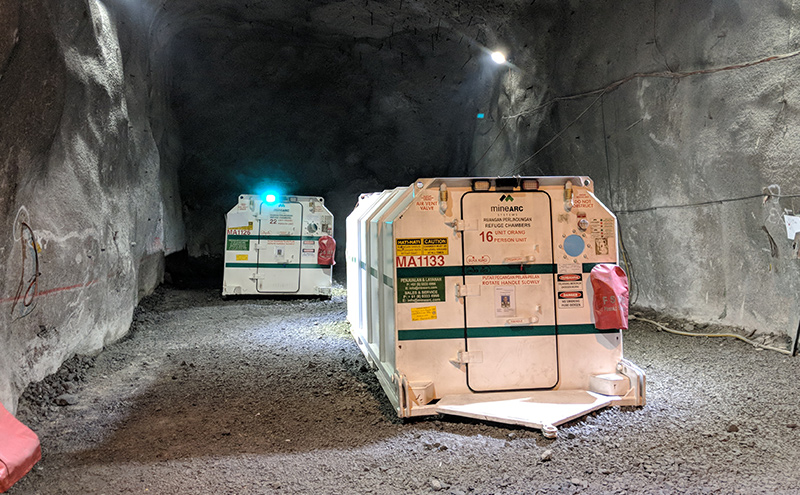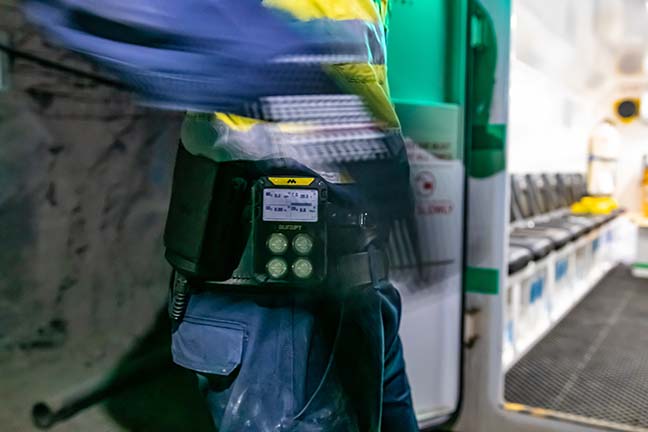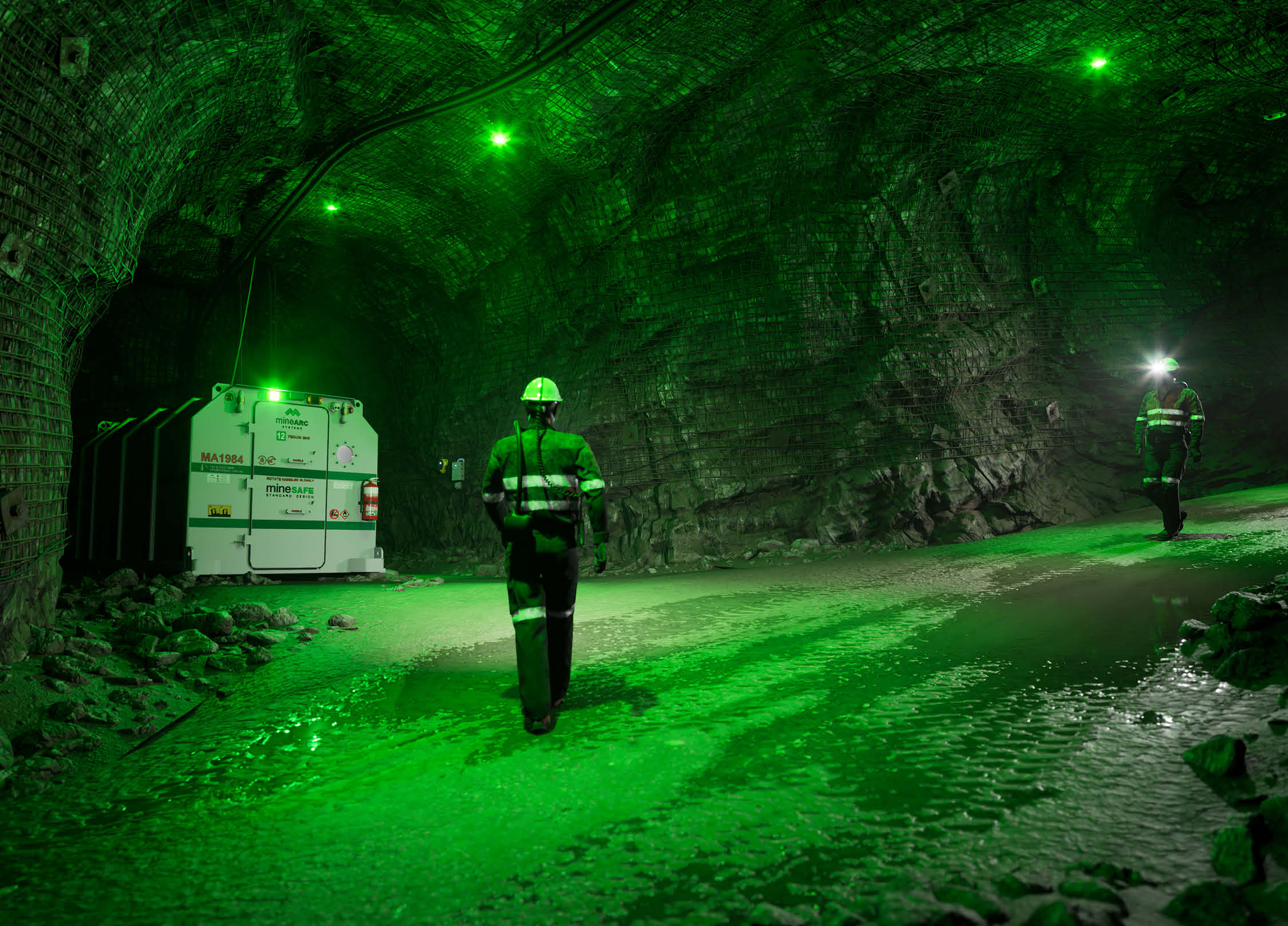MineARC is building on its MineSAFE emergency refuge chambers with a host of Internet of Things-enabled integrations, including the GuardIAN remote monitoring system. Safe to Work explains.
The Internet of Things (IoT), which refers to the increasingly prominent process of integrating various machines and objects to the Internet, has already had a big impact on mining.
Sometimes referred to in a mining and materials context as the Industrial Internet of Things (IIoT), it is a concept that holds much-untapped potential to improve project productivity while lowering operational costs.
By improving the speed and efficacy of communication and data collection, IoT facilities can also significantly impact safety standards. Safety specialist MineARC — known primarily for the production of its MineSAFE Refuge Chambers for underground mining — has developed the GuardIAN Refuge Chamber Monitoring System to support its products in this regard.
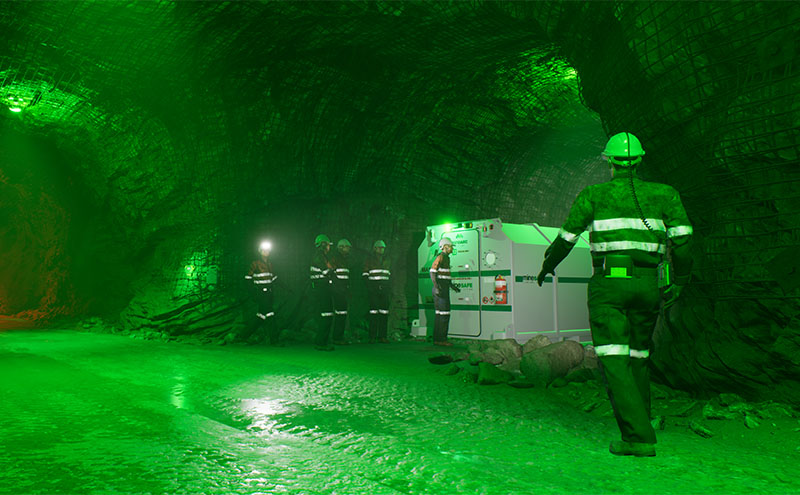
Part of MineARC’s wider GuardIAN Intelligence suite, it allows for real-time monitoring of refuge chambers using a locally hosted webpage.
Mine Refuge Chamber Technology
MineARC carried out the initial proof of concept and scope trials on GuardIAN Refuge Chamber Monitoring three years ago, with primary development taking place around a year-and-a-half later.
Customer feedback on MineARC’s suite of refuge chambers was the catalyst that initiated an internal conversation around how the company’s equipment could better integrate into wider mining activity.
As such, the plug-and-play remote monitoring system allows mine sites to monitor and communicate with personnel in real-time from the refuge chamber during an emergency.
“GuardIAN Refuge Chamber Monitoring improves on-site safety by allowing sites to proactively manage their refuge chambers at all times,” says Daragh Quinn, MineARC engineering manager.
“Real-time alerts notify sites of any compromise to the operation of the chamber, so issues can be managed quickly and without downtime. This is advantageous to site operations, as it means chamber maintenance can be planned out ahead of time.”
Refuge Chamber Components
When the Refuge Chamber Monitoring is used in combination with other elements of the GuardIAN Intelligence suite such as MineARC’s Compressed Air Management System (CAMS) and Aura-FX Digital Gas Monitoring System, the refuge chamber becomes entirely connected.
CAMS, for example, is a filter pack designed to optimise compressed air usage by regulating air intake into the refuge chamber. An air toxicity shut-off prevents entry of carbon-monoxide containing smoke from incomplete combustion from entering the chamber. Aura-FX offers monitoring of up to 11 gases based on client requirements, using voice prompts for changing out chemicals and regulating oxygen levels.
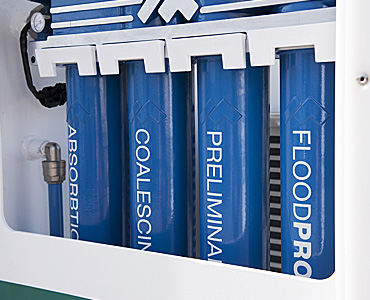
According to Quinn, GuardIAN’s engineering phase originally used single-board computing that collected as much information about the chamber as possible.
“It progressed further to better display and digest that information in a meaningful manner to people interacting with the equipment in different ways,” Quinn says.
“For example, some would be doing maintenance on the equipment and need specific information or system diagnostics, while others would be interacting with the chamber in an emergency scenario where communication and environment monitoring became more important.”
Scope documentation based on the definition of the problems revealed several ways in which the company could improve its chambers with holistic IoT integration.
For example, the team at MineARC discovered that routine inspections were taking too much time and using too many people.
In addition, data gathered during the inspection was often being misinterpreted. MineARC decided to focus on improving communication within the chamber and hired new staff to increase its product focus on the implementation of software and electronics.
Refuge Chamber Monitoring Launch
GuardIAN Refuge Chamber Monitoring was first released in the South African market following proof of concepts, engineering and prototype testing.
The Australian market soon followed. GuardIAN Refuge Chamber Monitoring has now been available for more than a year, and many sites are taking advantage of the technology.
OZ Minerals, for example, has upgraded its MineARC MineSAFE Refuge Chamber at the Carapateena copper-gold mine in South Australia with GuardIAN technology.
MineARC was also nominated for the Excellence in Mine Safety, OH&S award at the Australian Mining Prospect Awards in 2017 after releasing GuardIAN Refuge Chamber Monitoring.
According to MineARC, customer feedback has been positive so far, particularly regarding connectivity and accessibility.
“The main thing we’re dealing with at the moment is working on a system that’s as generic as possible,” Quinn explains.” Some sites will use CISCO and the system architecture that works with that; others use Rockwell Automation’s Allen-Bradley programmable logic controllers (PLCs), or others again allow a specific refuge chamber VLAN to be established, with browsers on the network able to access GuardIAN.”
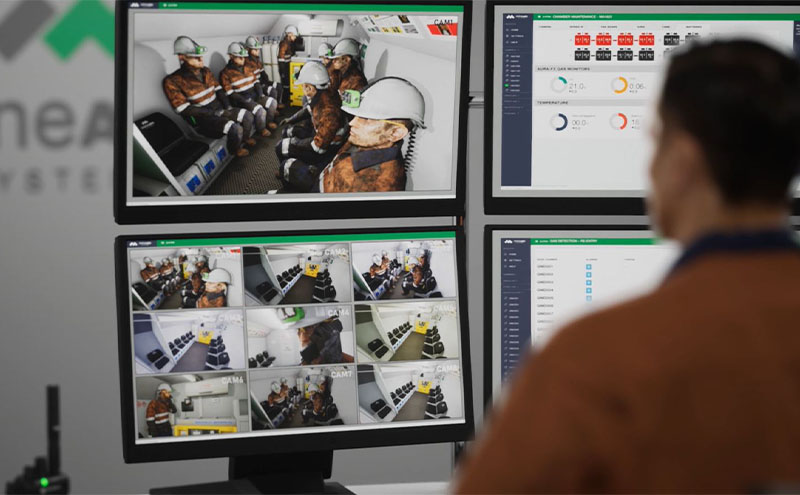
Refuge Chamber Connectivity
GuardIAN includes advanced connectivity features such as video monitoring (for occupant wellbeing and chamber monitoring); VOIP video phones for connection to the surface during emergencies and drills; operating system diagnostics, including scrubber monitoring, event logging and fault diagnostics; and integration with the aforementioned CAMS and Aura-X.
MineARC’s refuge chamber fleet can be analysed via a central software program accessible by computer, phone and email. Push email notifications can also be programmed for important events, reducing requirements for underground personnel.
MineARC offers free operational and service training to users to ensure correct usage of the refuge chamber and its systems (including GuardIAN). Quinn says MineARC is also “on the cusp” of releasing free induction packs to help clients train their staff on-site in the basics of refuge chamber use.
“GuardIAN improves on-site safety by allowing sites to proactively manage their refuge chambers at all times,” says Quinn
“Real-time alerts notify sites of any compromise to the operation of the chamber, so issues can be managed quickly without chamber downtime.
“This is also advantageous to operations, as it means chamber maintenance can be planned out ahead of time.”
This article was originally published as “Gimme shelter: How MineARC is modernising refuge chambers” by Australian Mining: Safe to Work.


